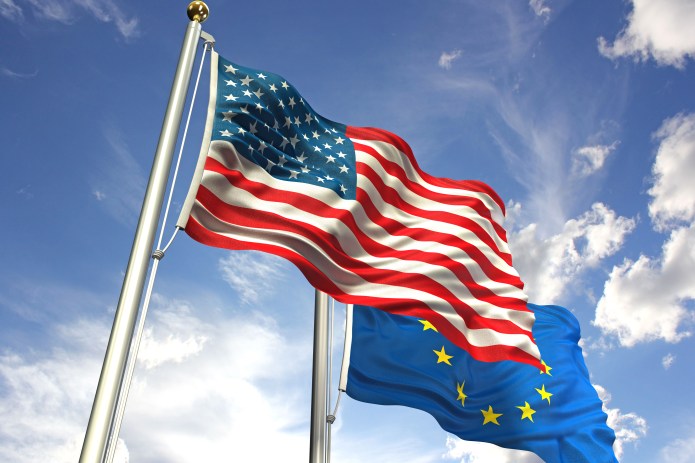
As anticipated, the US-EU trade deal has landed ahead of the 1 August deadline, averting what could have been an escalation in transatlantic trade tensions. The final framework agreement sets a 15% baseline tariff on most EU goods entering the US, lower than the feared 30% fallback rate and well below the 50% threat floated earlier this year. This outcome is broadly better-than-feared.
The 15% baseline tariff includes automobiles, pharmaceuticals and semiconductors – important products for Brussels. Steel and aluminium tariffs remain at 50% for now. Certain sectors were spared; aircraft and components, while select chemicals and key agricultural materials will face zero-for-zero tariffs. Also part of the deal are pledges for the EU to purchase US$750 billion in US energy; investment of US$600 billion in the US; and “vast amounts” of military equipment.
While some details remain vague, the deal signals a clear intent to rebalance trade while maintaining strategic alignment. Market reaction to the deal this morning has so far been positive, with recent rotation themes remaining intact. The deal removes a major overhang, allowing investors to refocus on the broader set of structural and cyclical drivers shaping the outlook for Europe. Notably, this includes the growing momentum behind EU-wide initiatives aimed at easing financial regulation, advancing capital markets and reducing bureaucratic friction.
It’s often in these market phases that leadership of stocks and sectors changes. We have reallocated to sectors that are at the cheaper, more cyclical and more value-end of the spectrum. Stocks priced for perma-recession or long-term poor sector prospects tend to experience the greatest change: from being ‘left for dead’ to ‘still alive and kicking’. Moreover, market breadth typically widens, i.e. instead of a narrow leadership group, many stocks would participate in a broad-based bull market.
Cyclical stocks: stocks whose prices are affected by macroeconomic or systematic changes in the overall economy. Among these are companies that sell discretionary consumer items eg. cars and travel, as well as miners, which are closely tied to the health of the global economy.
Bull market: occurs in a period where the prices of securities are generally rising, and is associated with economic growth and positive investor sentiment.
Germany stimulus package: in March 2025 an EUR 500 billion financial package was approved by a two-thirds majority in the Bundestag, aiming to help resolve the backlog in public investment and stimulate private sector activity.
Perma-recession: refers to a prolonged period of economic stagnation or decline, often characterised by slow growth, high unemployment, and persistent economic challenges, with no clear end in sight.
Tariffs: a tax or duty imposed by a government on goods imported from other countries.